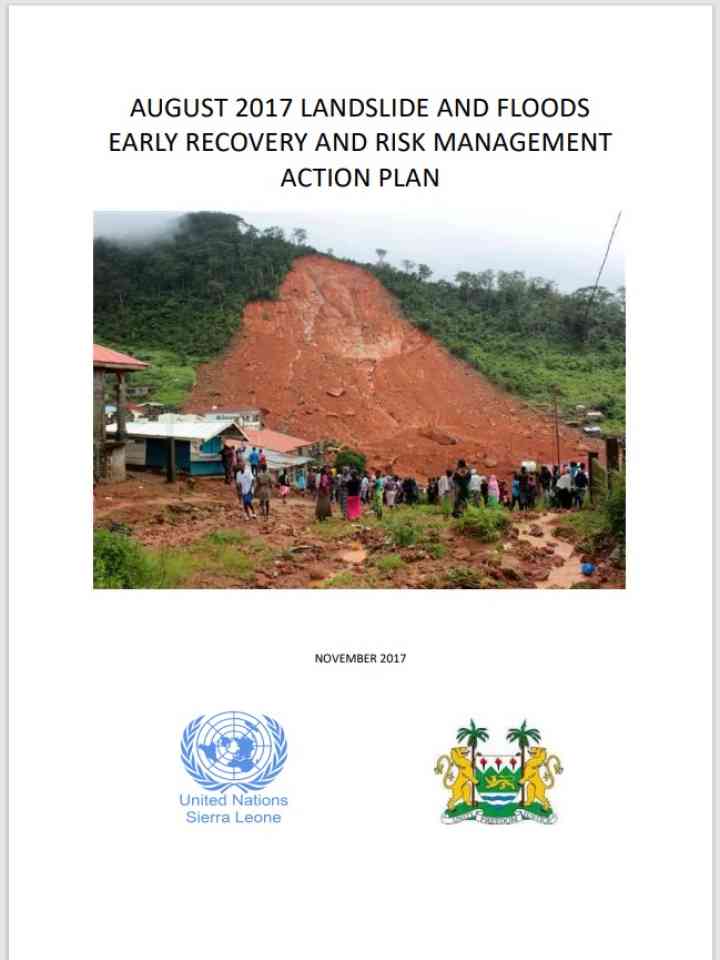Landslide and Floods Early Recovery and Risk Management Action Plan
On 14 August 2017, Freetown, the capital city of Sierra Leone was affected by devastating landslide and floods affecting over 7,000 people both from the Western Rural and Western Urban districts of the country . The landslide occurred in the Regent area below the highest peak in the north of the peninsula, Sugar Loaf.
According to the EPA/UNDP report, October 2017 'Analysis of the Causal and Trigger Factors of the August 2017 Landslide in Freetown: towards a Sustainable Landslide Risk Management in Sierra Leone', heavy rain, exacerbated by deforested land and densely populated communities living on steep hillsides contributed to the landslide.
The landslide and floods caused damages and losses to infrastructure assets and livelihoods. The concurrent floods also affected the livelihoods of about 6474 farmers' households countrywide.
Following, the landslide disaster, the Government of Sierra Leone (GSL) declared a State of Emergency and a week of national mourning. Under the leadership of the Office of National Security (ONS), Operation Sugar Loaf was launched which provided the following three humanitarian interventions:
a. Search and Rescue
b. Assistance to the survivors and directly affected people in the temporary displacement centres
c. Mitigation and early recovery for the survivors from potential risks such as disease outbreaks
Explore further
